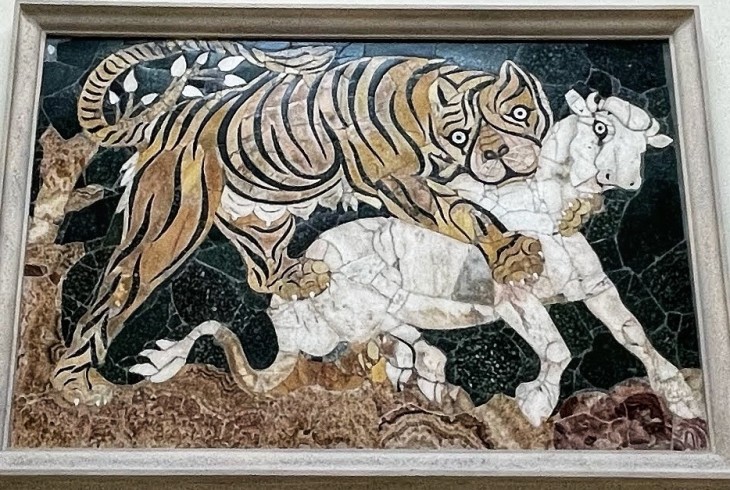When we think of the Colosseum, images of fearless gladiators locked in mortal combat immediately spring to mind. But the amphitheater’s bloodstained sands bore witness to more than just human duels - wild animals played a central role in the violent spectacle of the Roman games, too. Indeed, the exotic creatures that were brought in from the farthest reaches of the empire were protagonists second in importance only to the gladiators themselves in the ancient world's deadliest game.
Today we’re delving into the fascinating and often harrowing history of these untamed stars, exploring the vast imperial networks that supplied them, the men who hunted them, and the shocking numbers that perished for the entertainment of the masses. From the deadly performances of the venatores to the grim fate of those condemned to face the beasts, join us as we uncover the legacy of wild animals in the Colosseum. Here's what we'll cover:
- A brief history of venationes in Rome
- Roman imperialism in miniature
- What kind of animals featured during the games at the Colosseum?
- How many animals died in the arena?
- Who were the venatores and what did they do?
- Glory hunters and the curious case of the emperor Commodus
- Who were thrown to the lions and why? Damnatio ad bestias
- Ludi Meridiani: Deadly dress-up

A brief history of venationes in Rome
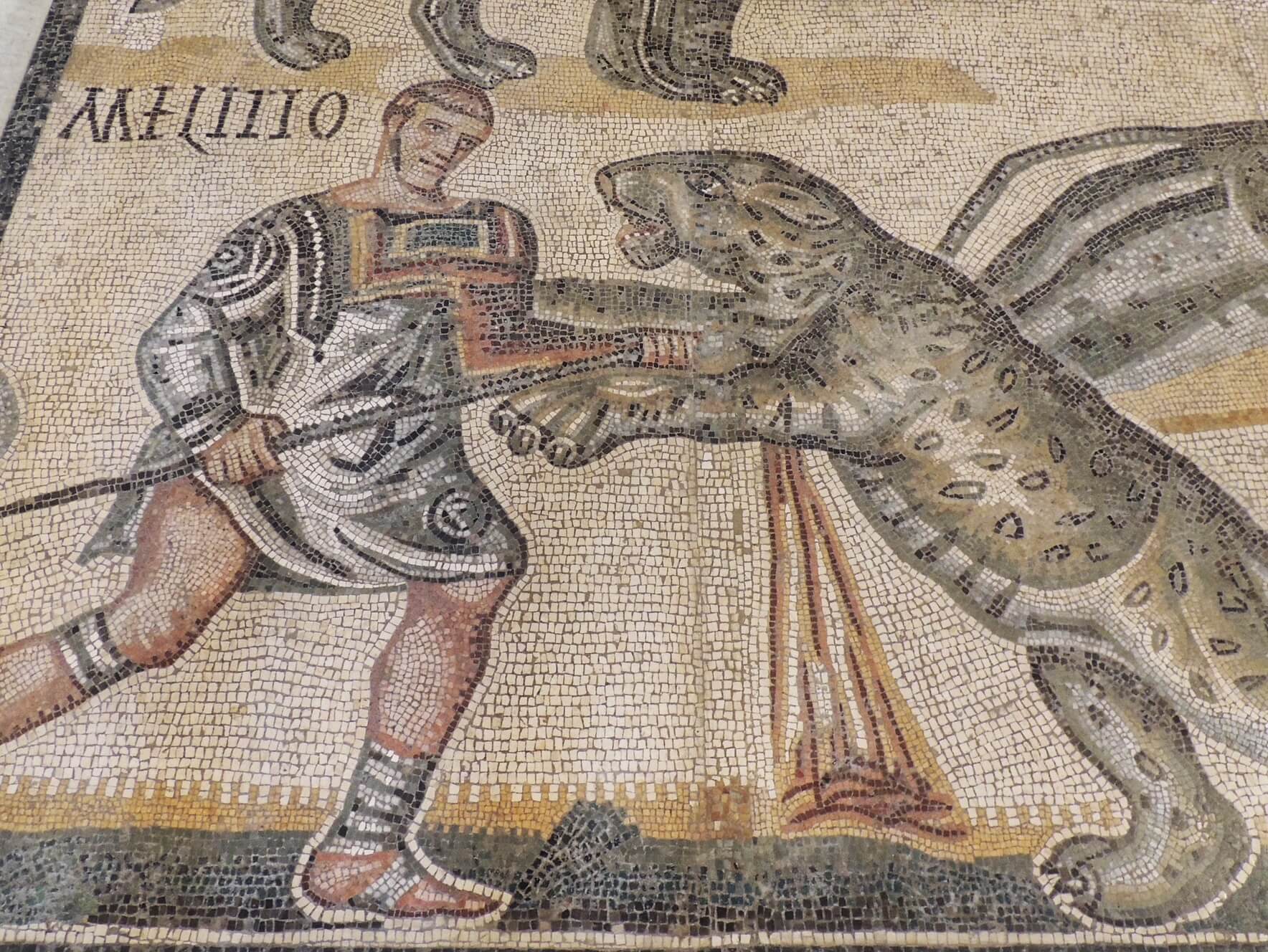
The lavishly brutal games that took place at the Colosseum were hugely effective propaganda stunts that showcased the limitless wealth and generosity of the emperors who staged them. To that end the games had to be as spectacular as possible, and the novel sight of exotic beasts fighting ferociously in the arena was a central feature of the festivities.
Even before the Colosseum was inaugurated in 80-81 A.D., public spectacles of wild animals being hunted down, fighting each other or goring unfortunate criminals were common in the Roman Empire. The first recorded instance of wild animals being displayed as a public spectacle in Rome comes from 251 BC, when 142 elephants were exhibited to celebrate a famous victory for the Roman legions over the pachyderm-riding Carthaginians. Having little use for the animals afterwards, they were slaughtered.
With the passage of the centuries things got a lot more sophisticated. In 186 B.C. the Roman consul and general Marcus Fulvius Nobilior staged the first known example of lions and panthers being hunted down in the arena for sport, and his innovation caused a sensation. Such venationes, as they were known, quickly became a staple of the Roman games and in 46 BC Julius Caesar built a dedicated wooden amphitheatre where such spectacles could be staged.
As Rome transitioned from a Republic to an Empire, these bloody exhibitions of wild animals soared even further in popularity. During the reign of Rome’s first emperor, Augustus, no fewer than 36 Egyptian crocodiles were hunted to death in an extravagant demonstration at the Circus Flaminius, where a special water pool was constructed for the occasion. Augustus himself boasted that he had staged 26 shows over the course of his reign, in which over 3,500 ‘African wild beasts’ perished. By the time the massive Colosseum was finally inaugurated in 80-81 AD under the emperor Titus, it was taken for granted that massive and elaborate hunts would form a central part of the entertainment.
Roman imperialism in miniature

Rome’s mania for exotic animals was no doubt partly down to a desire to visualise the Empire’s dominion over the known world. Nothing could be a clearer exemplification of the power of Rome than its capacity to bring the most ferocious beasts known to man to heel on the sands of the arena at the centre of the Empire, all for the entertainment of the populace – the logic of imperial conquest played out in miniature.
As if to emphasise the point, the animal hunts at the Colosseum were typically staged in elaborate settings that recreated the furthest flung corners of the empire – forests and cliffs, deserts, crags, caves and practically every other kind of topography imaginable were rigged up at the Colosseum - bringing the frontiers of the known world vividly to Rome.
What kind of animals featured during the games at the Colosseum?
Wild animals of every imaginable stripe were brought to Rome from the most distant corners of the Roman empire to feature in high profile games at the Colosseum. The Scriptores Historiae Augustae explicitly praised the emperor Antonius Pius for his munificence in staging a games featuring ‘all the animals of the whole earth,’ and it seems such claims were scarcely an exaggeration: lions, rhinos, crocodiles, hippos, cheetahs, rhinoceroses, monkeys and elephants were all transported from Africa to the capital; tigers, leopards, panthers, and cheetahs made the perilous journey from Asia, whilst bears were captured and taken to Rome from the highlands of Scotland – mysterious Caledonia wasn’t even part of Rome’s dominion, and so the bears had to be caught on furtive raiding expeditions beyond Hadrian’s wall.
All these animals met their end in the arena before spellbound audiences in ever more inventive fashion.
Less fierce animals made appearances too: zebras and ostriches pulled chariots before being slaughtered, and elephants were trained to dance and do tricks before being bathed in their own blood. The intelligent pachyderms occasionally inspired pity amongst the audiences – Pompey wowed the people with a massive venationes in dedication of his own theatre in 55 BC, and the crowd were reportedly delighted at the sight of 500 lions being put to the sword.
But when the elephants had their turn, Plutarch remarks that the crowd felt only ‘compassion and a kind of feeling that that huge beast has a fellowship with the human race.’ Once the organisers even tried adding giraffes to the mix, but their docile nature was such that even the blood-thirsty Romans didn’t much enjoy seeing them slaughtered, and the idea was quickly abandoned.
The scale of the organisational problems, and eye-watering costs, encountered in bringing such ferocious and massive beasts all the way to Rome is practically unimaginable. Scholars are still fuzzy on the logistics, and it’s probable that a large proportion of the wild animals destined for the arena perished on their journeys across the seas. Unsurprisingly, then, it wasn’t just exotic and rare animals from all corners of the known world that were slaughtered in the arena.
Whilst ancient sources are more interested in recounting these exceptional beasts, untold numbers of easier to source deer, goats, boars and cattle also served as prey for the arena hunts.
How many animals died in the arena?
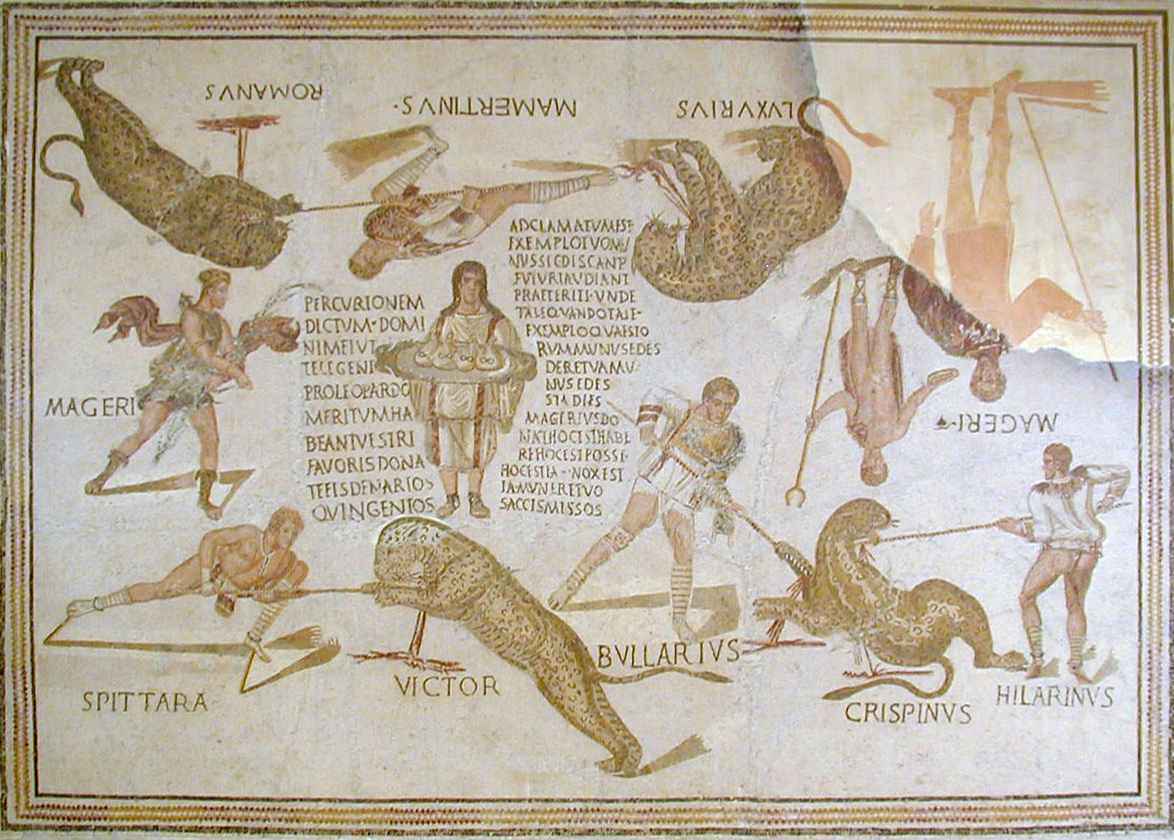
Augustus’ boast that 3,500 wild beasts perished in games during his reign pales in significance when compared to the sheer scale of bloodletting that took place at the Colosseum in the centuries to come. Reliable data is somewhat scant, but the numbers that have been passed down to us from ancient sources are nonetheless pretty staggering.
Suetonius’ claim that over 5,000 animals were butchered on a single day during the Colosseum’s inaugural games might be taken with a pinch of salt, but the historian Cassius Dio’s more sober estimate that over 9,000 beasts were killed over the course of the 100 day inauguration is scarcely less shocking. During an even longer 123 day long games that took place under the emperor Trajan in the year 108-9 AD, more than 11,000 were reportedly slaughtered.
The Roman taste for shedding bestial blood was so great that they brought some animals to the verge of extinction in these wanton acts of ecological vandalism. Hippos disappeared from the Nile and lions no longer roamed through Mesopotamia, whilst the north African elephant, aurochs, European wild horses, great Auks and Eurasian lynxes were all wiped out entirely.
Who were the venatores and what did they do?
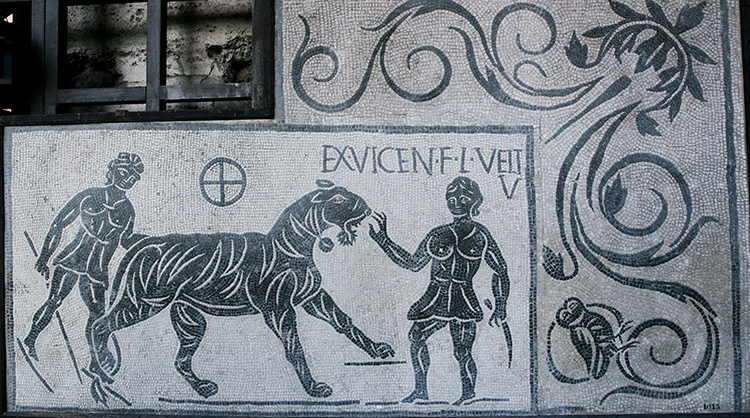
Generally, those enjoined to hunt or do battle with wild animals at the Colosseum had backgrounds similar to the gladiators. Prisoners of war, slaves and desperate poor saddled with life-threatening debts swelled the ranks of the venatores. Whilst they never attained the celebrity status open to the most popular gladiators, the venatores were nevertheless an integral part of the show.
Just like the gladiators, they were trained in special schools: the most famous was founded by the hunting-obsessed emperor Domitian and known as the Ludus Matutinus, or morning school – so-called because the hunts at the Colosseum usually took place in the morning before the stage was cleared for the gladiators in the afternoon.
The tasks of the venatores were multiple, and included training the wild animals to fight spectacularly against each other in the arena – not always an easy undertaking, as the beasts were often forced to act against their nature. A third-century coin shows an elephant doing battle with a bull in the amphitheatre, whilst a particularly popular part of the Colosseum’s opening games pitted elegant crane birds fighting each other for the crowd’s entertainment – both unnatural scenes testament to the venatores’ dark skill.
Other sources recount bears forced to fight pythons, lions battling crocodiles and other exotic combinations. Sometimes the animals even had to be chained to each other to force them to fight. To stop the panicked and enraged animals causing mayhem by jumping into the rows of senators and VIPS just feet from the arena in the front row, the floor was surrounded by a net topped with sharpened elephant tusks that would impale any creature attempting to clear it. As a further safety measure, rows of archers were poised to unleash a volley of arrows lying in wait just beyond.
But the main part of the venatores’ job consisted in hunting the animals themselves. In the artificial stage-sets of the arena, the hunters would take down lions and bears, cheetahs, bulls, elephants and crocodiles with arrows and spears. The most dangerous kind of activity the venatores could engage in were armed battles with the wild beasts, in which they wore light tunics and carried short spears.
We have a great idea of how the hunting spectacles progressed during Roman games because they are depicted in countless surviving mosaics and frescoes from all across the empire. One of the most interesting is the so-called Magerius mosaic, commissioned to commemorate the eponymous Magerius’ generous sponsorship of a games in Tunisia. Lightly dressed venatores, whose names are commemorated in inscriptions, expertly dispatch leopards (also named) with spears – one even does so on stilts – as an attendant proffers bags of cash for each animal killed.
Did the emperor Commodus compete at the games?
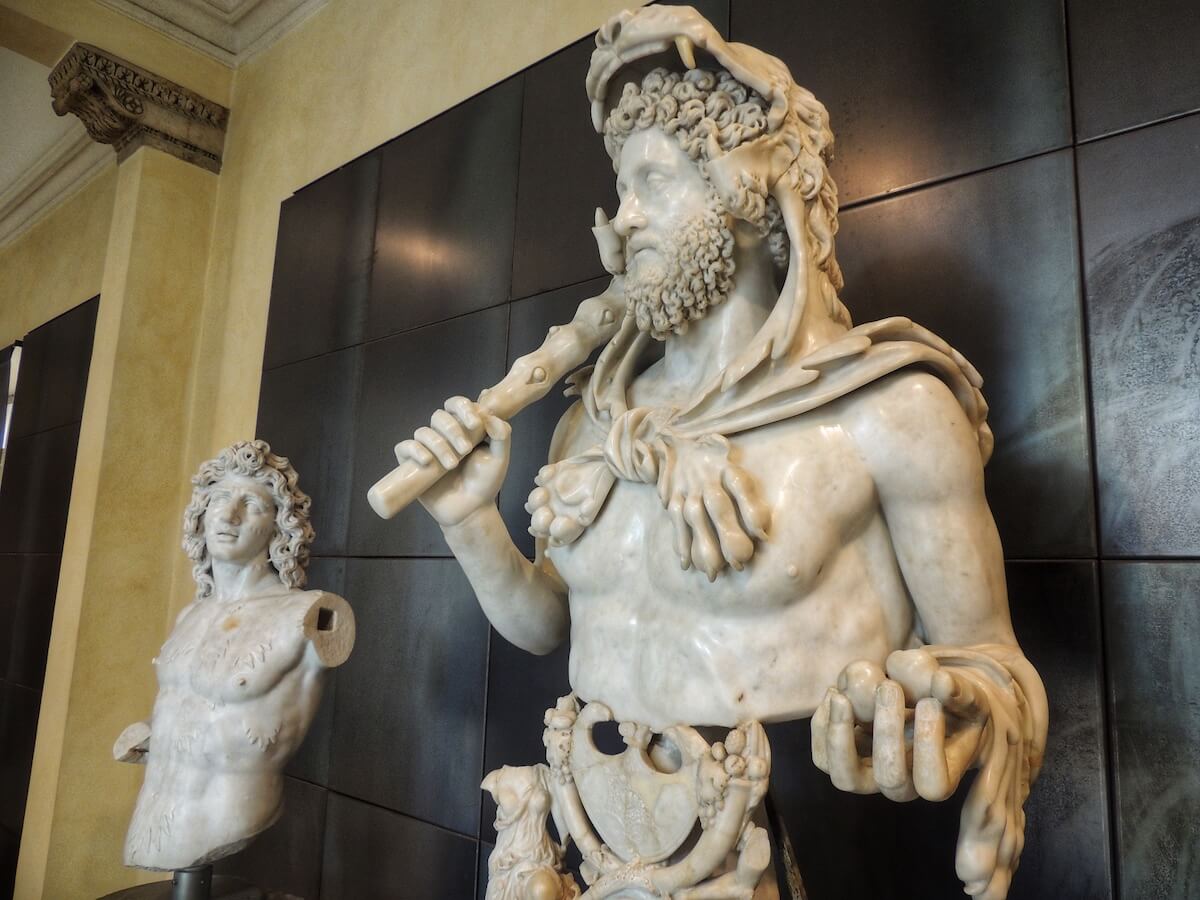
Venatores weren’t necessarily forced to fight: joining the fray was considered a way to show one’s courage, and youthful elites occasionally entered the arena with the animals – usually, however, they enjoyed a degree of personal safety not open to the jobbing pros.
Whilst the Emperor Commodus probably didn’t engage in fully-fledged one-to-one gladiatorial combats as portrayed in the film Gladiator (despite boasting that he had won an incredible 12,000 bouts over his ‘career’), he certainly did relish slaughtering beasts in the arena. So proud was he of his exploits in dispatching wild animals, that Commodus frequently had himself depicted as a second Hercules – complete with lion’s pelt and club.
When he joined the games at the Colosseum he definitely wasn’t fighting fair though – in all likelihood the animals were tied up and didn’t have the opportunity to fight back, and Commodus often remained safely distant on a raised platform firing arrows at them. Once, according to Cassius Dio, the emperor personally picked off a hundred bears as a warm up act to the games. One of his favourite tricks was decapitating ostriches with his arrows, then tossing their heads into the crowd.
Who were thrown to the lions and why? Damnatio ad bestias
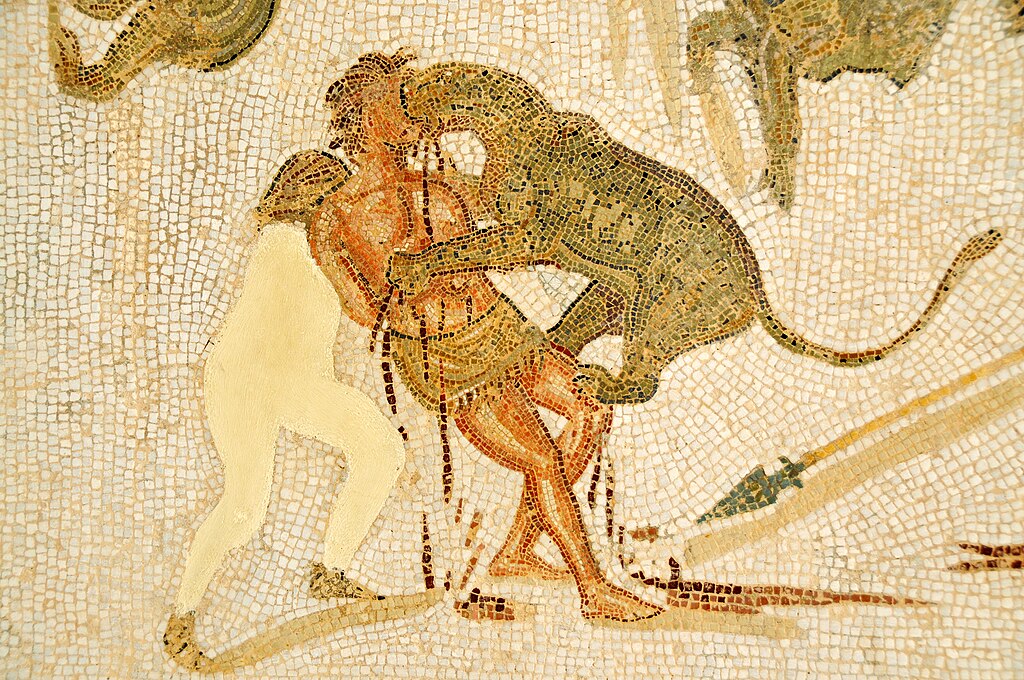 Roman mosaic in the Archaeological Museum of Tunisia. Photo Dennis G. Jarvis, CC BY-SA 2.0
Roman mosaic in the Archaeological Museum of Tunisia. Photo Dennis G. Jarvis, CC BY-SA 2.0
Beneath the venatores on the pecking order in the arena were the bestiarii. The bestiarii were unarmed, and tasked with baiting the animals to make them more ferocious or teasing them with whips, lassos and bright rags.
They were also responsible for managing what was perhaps the least savoury aspect of the entire games, the so-called damnatio ad bestias in which prisoners condemned to death were thrown to the wild animals in the arena in fulfilment of their punishment.
Usually reserved for enemies of the state and prisoners of war, damnatio ad bestias unfolded in one of two ways. In the first, the condemned was expected to fight the beast, and was furnished with a spear, or more rarely a sword. With such minimal tools they usually didn’t stand a chance. On the rare occasion that they managed to defeat an animal, another would be promptly released to finish the job, cutting short any momentary euphoria.
Others, the lowliest of criminals, were not expected to fight at all– instead they were exposed naked to the lions, panthers, tigers, boars and leopards without weapons or protection. Sometimes they were dressed in animal skins to further incite the beasts. These gruesome capital sentences were a warm up act for the gladiator contests, and usually took place during the lunch-interval, a sort of macabre half-time show.
Not surprisingly, the prospect of such a violent and publically humiliating death proved too much for many of those condemned to perish in the arena, and there are numerous recorded examples of prisoners committing suicide in the cells of the Colosseum’s underground before their turn on the sands above.
According to Symmachus, a group of 29 Saxon prisoners strangled each other rather than face the animals, whilst one particularly lurid tale recounted by Seneca relates how a German venatore escaped to the bathroom just before a show and choked himself to death with the first thing that came to hand – the sponge with which Romans wiped themselves after answering the call of nature.
Ludi Meridiani: Deadly dress-up
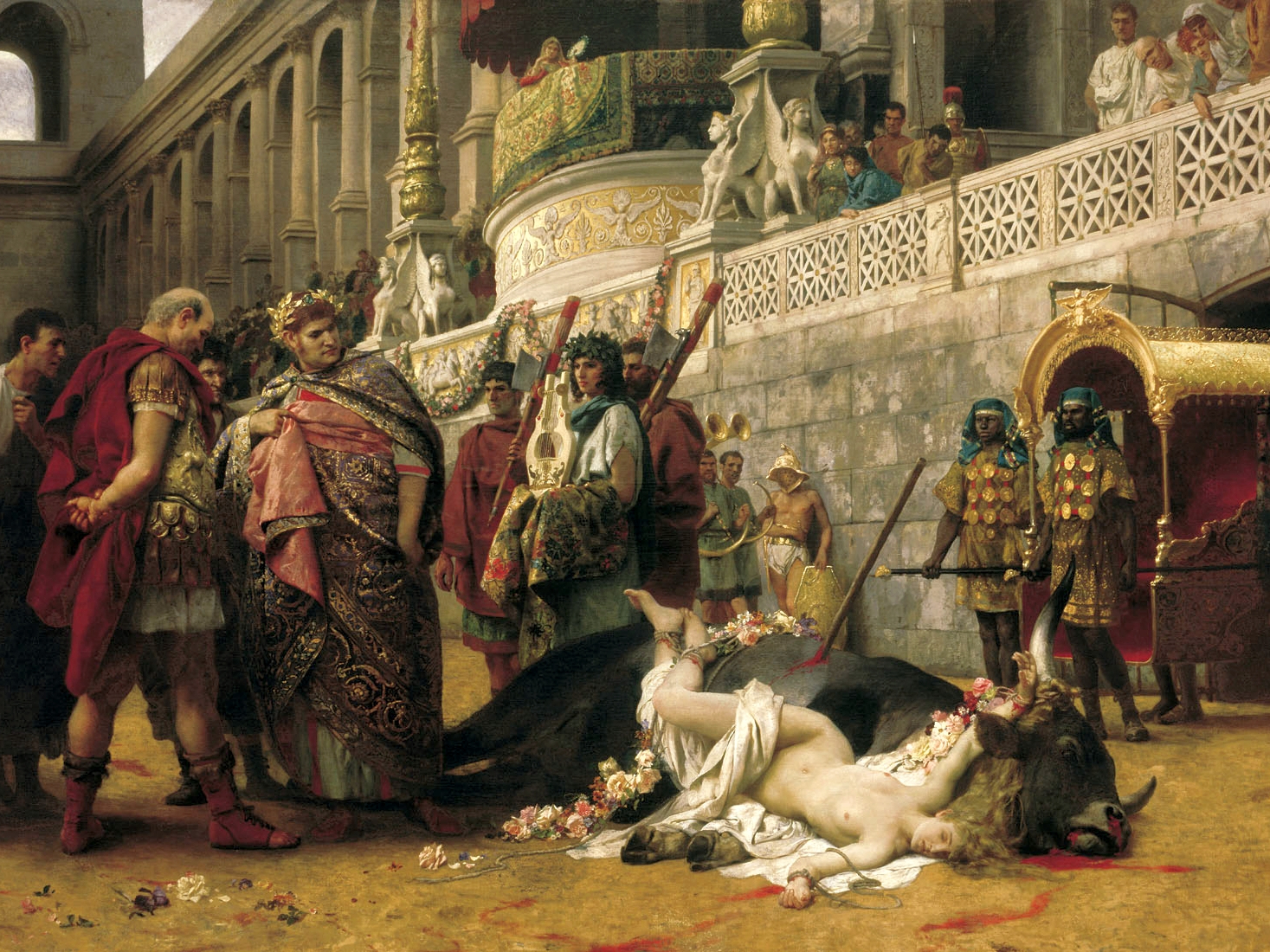
The Roman event-planners in charge of the games’ programmes were nothing if not inventive, and the afternoon damnatio ad bestias was not always a static affair. Sometimes they were transformed into full-scale re-enactments of Greek myths, which were tragic and brutal affairs at the best of times. Those condemned to take part in these perverse stagings were forced to take on the role of the tragic victim suffering all manner of bizarre torments. A few examples will give you an idea.
Hercules famously burned to death before his apotheosis towards the land of the gods, and the anyone condemned to take on his role at the games made his appearance in the Colosseum wielding a club and wearing a tunic soaked in pitch, before being immolated alive. The musically inclined Orpheus meanwhile was recognisable from the lyre he carried, and the Colosseum was transformed into a verdant woodland full of animals for his gruesome star turn. Instead of charming a bear with his music as the hero does in the ancient myth, however, here Orpheus was torn apart by the disenchanted animal, with only his lyre to defend himself.
According to Greek mythology, Icarus flew too close to the sun on homemade wings and fell to earth as a result of his hubris. In the Colosseum re-enactment, a victim was given paper wings and then flung from the highest point of building hundreds of feet in the air and onto the arena floor far below, splattering into a bloody mess before the Imperial box to the delighted squeals of its guests.
In a tale blood-curdling even by the standards of ancient myth, finally, the handsome youth Attis castrated himself out of grief after breaking his vow of faithfulness to the mother of the gods Cybele. Sources recount that condemned men forced to reprise this role as part of their executions met a similar fate, castrated on the sands of the arena.
We hoped you enjoyed this guide to the brutal world of wild animals hunts at the Colosseum. If you want to learn more about the ancient world's deadliest game in person, then be sure to check out our award-winning Colosseum tours!
MORE GREAT CONTENT FROM THE BLOG:
- How to Visit the Colosseum in 2025
- A History of the Colosseum
- Did the Colosseum Have a Roof?
- 5 Fascinating Facts About the Colosseum's Arena Floor
- The Colosseum Underground: The Deadliest Show on Earth
- Wild Animals in the Colosseum
- The Best New Tours of Italy in 2025
- Where to Stay in Rome in 2025: Areas and Hotels Guide
If you enjoyed this guide to the brutal world of wild animals hunts at the Colosseum, then be sure to check out Through Eternity’s Ancient Rome tours - the best way to get the full story of the ancient world’s deadliest pastime. Thanks for reading!
